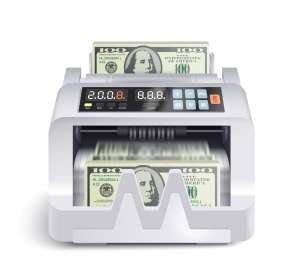The pharmaceutical industry heavily relies on ultrapure water. It is used as a raw material, solvent, and cleaning agent, ultimately impacting drug safety and efficacy. Water is needed for all types of pharmaceutical products, from tablets to injections. This is why government bodies like the FHA and WHO impose stringent quality control standards.
But what about wastewater? Can it be purified? And if yes, can pharmaceutical companies reuse this purified water?
Ensuring water purity in pharmaceutical production is a huge challenge that can only be addressed through the use of advanced technologies. Let's break it down.
Pharmaceutical Water Systems: Common Challenges
First things first, let's rewind some common challenges faced by pharma and cosmetic companies when it comes to ensuring water purity.
- Adapting to varying available water quantity
- Monitoring microbial contamination
- Ensuring regulatory compliance to validate water purification standards
- Following sustainable practices to reduce the environmental impact of their operations
Modern Wastewater Purification Technologies in the Pharmaceutical Industry
Pharma and cosmetic wastewater is often more toxic and contaminated than residential wastewater. It contains a mix of residues, metabolites, and by-products that are difficult to remove through standard treatment processes.
Here are some modern technologies for water treatment in pharmaceutical industry that make a difference:
Reverse Osmosis (RO)
Reverse Osmosis (RO) is a pressure-driven mechanism that pushes water through a semi-permeable membrane to remove contaminants. The membrane has microscopic pores, allowing water molecules to pass through, but preventing larger pollutants from doing so. These larger molecules, including dissolved salts, minerals, bacteria, and viruses, are left behind.
Reverse osmosis does two things: It separates purified water, which can be reused for other pharmaceutical processes. Whereas minerals and dissolved salts become the output of resource recovery. RO is capable of removing nearly 99% of all impurities.
Ultrafiltration (UF)
In addition to reverse osmosis, ultrafiltration also uses thin membranes with tiny pores to remove very small particles. This includes endotoxins, bacteria, and viruses. Most pharmaceutical companies don't rely solely on ultrafiltration (UF). It is often used as a final polishing step.
Ultraviolet (UV) Disinfection
Another common way to treat wastewater in the pharma and cosmetic industries is ultraviolet (UV) disinfection. It is a chemical-free process that uses UV light to inactivate microorganisms, bacteria, and viruses. The aim is to prevent microbial contaminants from entering storage tanks and to treat wastewater.
The purified water can either be safely discharged or reused.
Electrodeionization (EDI)
Electrodeionization (EDI) is a process that combines reverse osmosis (RO) with an electrically driven process to remove dissolved salts and impurities. It is a chemical-free solution mainly used for producing Water for Injection (WFI) to meet high regulatory standards.
Water is first purified by reverse osmosis and then passed through an EDI module. A combination of ion exchange resins and ion exchange membranes is used to force ions to move through the membranes. Contaminants are collected at the membrane, and purified water is collected.
Distillation
It involves boiling water to create steam, leaving impurities behind. The steam is condensed to collect pure water. Distillation is incredibly effective at removing non-volatile impurities. It also helps minimize environmental impact.






